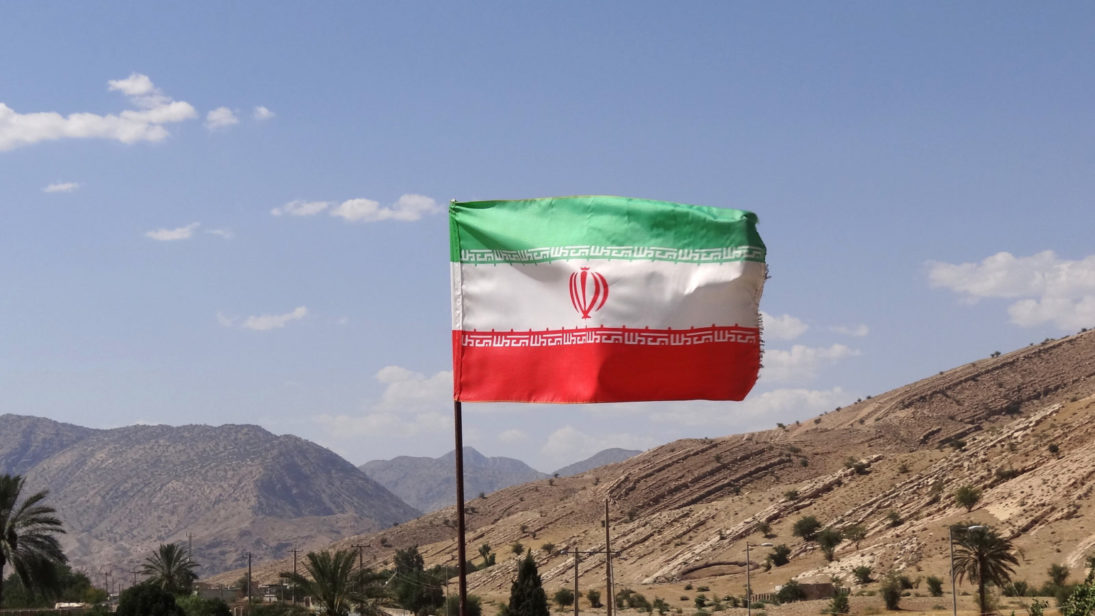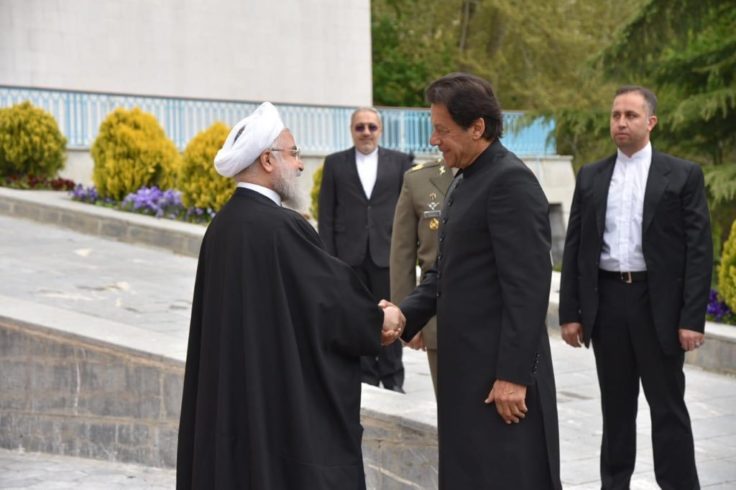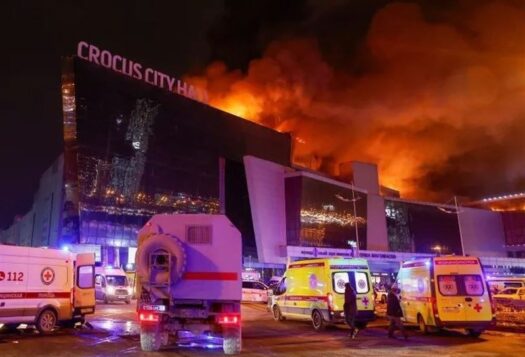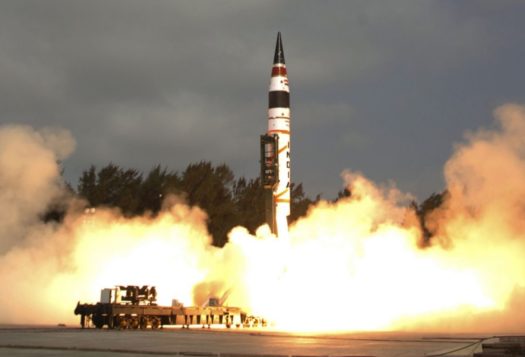
Earlier this month, Qassem Soleimani, commander of the Islamic Revolutionary Guard Corps (IRGC)-Quds Force, was killed by the United States in Baghdad. Although the initial spike in escalatory tensions between the United States and Iran appears to have momentarily subsided, Soleimani’s death could have lasting implications for Iran’s proxy operations in the region.
As head of the Quds force, the foreign arm of the IRGC, Soleimani managed a wide network of proxies to pursue Iranian interests across the Middle East. But while Soleimani’s activities and the potential repercussions of his death are often discussed in the realm of the Middle East, South Asia has also been an important region of engagement for the IRGC. Thus, if Iran and the United States continue the cycle of escalation in the aftermath of Soleimani’s killing, Afghanistan could become a proxy battleground, Pakistan may experience spillover of violence, while India’s economic and strategic interests may be compromised.
Afghanistan: Likely Playground for a U.S.-Iranian Tussle
Although not as extensively as Iraq, Afghanistan has also been a site of U.S.-Iranian competition—with the United States calling out Iran on its military support to the Taliban and regional proxies. Iran’s interests in Afghanistan are multi-pronged and include protecting against extremist Sunni groups while limiting U.S. influence where possible. This has contributed to an ambiguous role for Iran in Afghanistan, where it appears to hedge its bets by supporting both the Afghan government as well as the Taliban. Afghanistan has been one of the main operating arenas for the Quds force, and Afghans have joined Iranian militia groups. Thus, should Iran decide to bring additional pressure onto U.S. troops, Tehran has a number of proxies that it could use to attack American forces and allies in Afghanistan.
Soleimani directed Iran’s militia activities across the region and was respected by various non-state groups that cause instability in the region. Thus, his death may generate reactions and responses that could spillover from the Middle East into South and Central Asia. One such group of concern is the IRGC-led Liwa Fatemiyoun, a militia primarily composed of Afghan Shias that served as one of the largest contingents of foreign fighters in Syria. It is believed to have between 10,000 to 20,000 members, primarily composed of Afghans who were refugees in Iran. Though fighters who have returned to Afghanistan from Syria have largely not taken up arms, the Afghan government fears the spillover of sectarian conflict from the Middle East into the country if they do.
What exacerbates fears of Iranian meddling in Afghanistan is that Soleimani’s successor, Esmail Qaani, is quite familiar with Liwa Fatemiyoun as well as the IRGC’s activities in Afghanistan. Qaani was most likely based in Mashhad—the site of an Afghan Taliban office in Iran—as commander of the fourth Quds Force Corps, responsible for the IRGC’s role in Afghanistan, Pakistan, as well as Central Asia.
However, even though Qaani appears to have more experience in South and Central Asia than Soleimani, Iran may not change its aims in Afghanistan significantly. For one, Tehran is consumed with addressing the threat of Islamic State-Khorasan Province and thus, ratcheting up activities in Afghanistan may backfire. Secondly, the United States is already looking to withdraw from Afghanistan, which means it is not in Iran’s interests to go after U.S. presence there. Thus, we may see more or less a continuation of Iran’s erstwhile policies in Afghanistan rather than a sharp divergence.
Pakistan: Potential Target of Sectarian Flare-ups
Pakistan has opted to distance itself from the conflict between the United States and Iran because it remains vulnerable to spillover from any proxy battles between the two in the region, especially if other regional stakeholders such as Saudi Arabia get involved. Of particular concern for Pakistan, a Sunni-dominated country with a significant Shia population, is an eruption of sectarian tensions in the Middle East as a result of Soleimani’s death, which could complicate Pakistan’s domestic stability.
Sharing a nearly 600-mile border, Pakistan and Iran have a checkered history, with both countries accusing the other of sheltering militant groups. Iran has occasionally exploited sectarianism in Pakistan to recruit fighters. Soleimani and his men created a militia, the Liwa Zainabiyoun, that is made up of Pakistanis who mainly hail from Parachinar—a small, predominantly Shia town in Khyber Pakhtunkhwa. Thus, if Islamabad is seen as supporting Washington in any way, Iran could use such groups to destabilize Pakistan. There is also a worry that Soleimani’s killing could radicalize Pakistan’s Shia population.
However, Zainabiyoun remains much smaller than its Afghan counterpart, with reports estimating anywhere between 1,000 to 5,000 fighters. In addition, as Adam Weinstein writes, Pakistan’s Shias have not been receptive to Tehran’s ideology nor have their perceptions of Iran been colored by sectarianism. Thus, while it is possible that Parachinar could see unrest, this may not necessarily apply to the rest of Pakistan. Attempting to polarize Sunnis and Shias against each other in Pakistan would be unnecessarily provocative without clear dividends, especially when Iran can more easily mobilize such groups in Afghanistan.

For its part, Pakistan has called for all involved to exercise restraint and Foreign Minister Shah Mehmood Qureshi stated that the country will not take sides in any escalation between the United States and Iran.
India: Caught in the Strategic Crossfire
Unlike Afghanistan and Pakistan, India faces a larger geopolitical dilemma in the aftermath of Soleimani’s killing. India does not share a border with Iran, nor have a large numbers of Indians joined with Iran in fighting abroad. While there are multiple Shia organizations in India that maintain linkages with Iran and spread Khomeinist thought in Kashmir and elsewhere, protests over Soleimani’s killing in areas like Kargil where such institutions are more powerful have been limited. However, increasing tensions between Iran and the United States, as well as the threat of further instability in the Gulf as a fallout of Soleimani’s killing, threaten to pull India into the conflict.
The implications for India have more to do more with its strategic relationship with Iran. India has taken a relatively neutral approach to the assassination of Soleimani, asking for restraint by both parties. Any escalation between Washington and Tehran risks harming India’s strategic and economic interests, particularly the Chabahar port project in Iran, which would give India access to Afghanistan and Central Asia without using a land route through Pakistan. More pressing for India is the potential of the Soleimani killing to escalate into broader instability in the Middle East—this could threatening its oil supplies from Iraq and the United Arab Emirates, which are critical for New Delhi as it has become less reliant on Iranian oil following threats of U.S. sanctions.
What Happens Now?
While the immediate tit-for-tat strikes in the aftermath of Soleimani’s death have seemingly ended with the Iranian missile strikes on January 7, tensions between Washington and Tehran have not completely subsided, leaving the risk for further retaliatory actions still on the table. With countries like Afghanistan serving as a key arena for the Quds force, India being a strategic partner of Tehran and Washington, and Iran’s complex relations with Pakistan and the United States, U.S. and Iranian policies after Soleimani’s death could have South Asia bracing for impact.
***
Image 1: Adam Jones via Flickr


